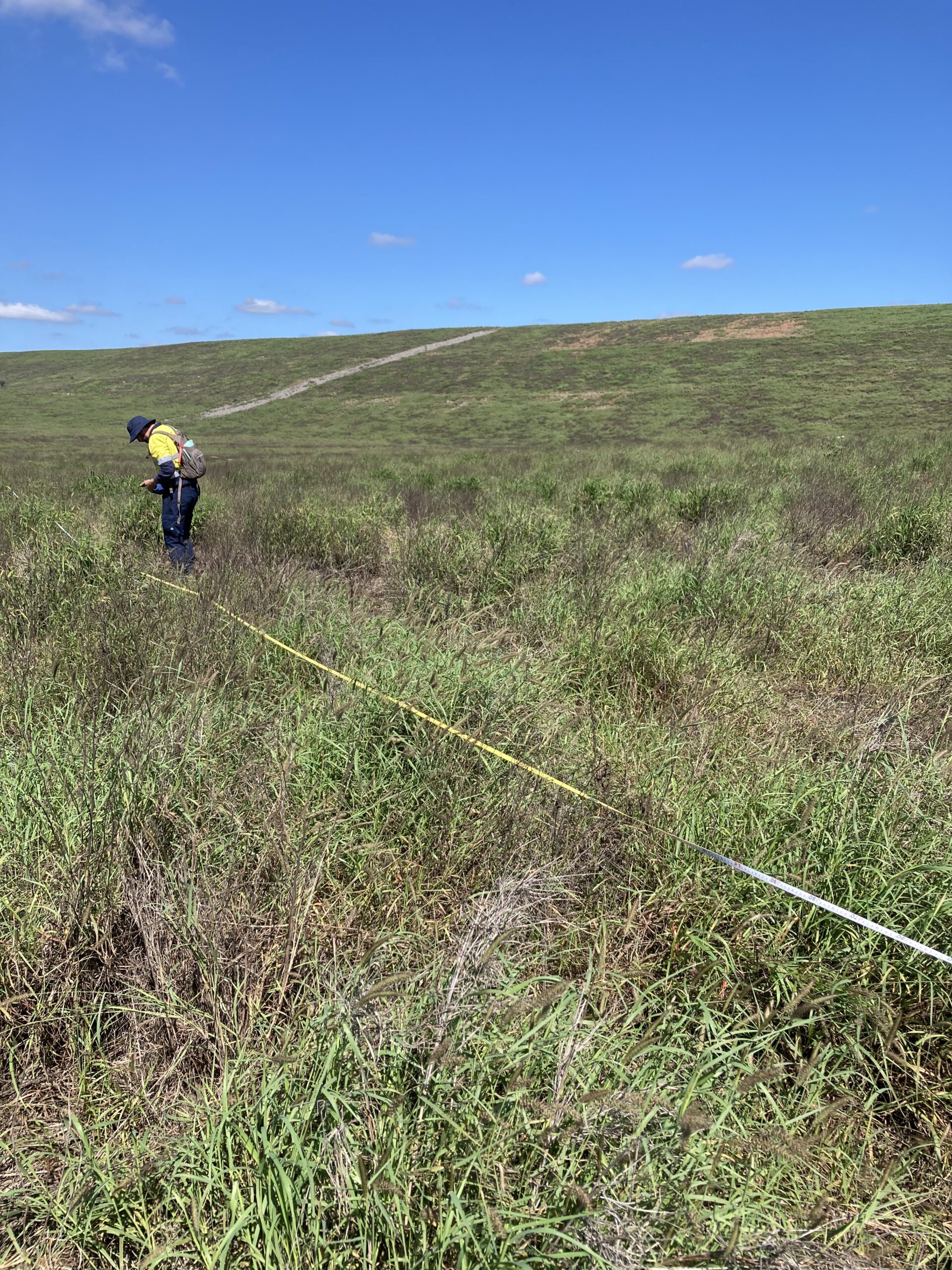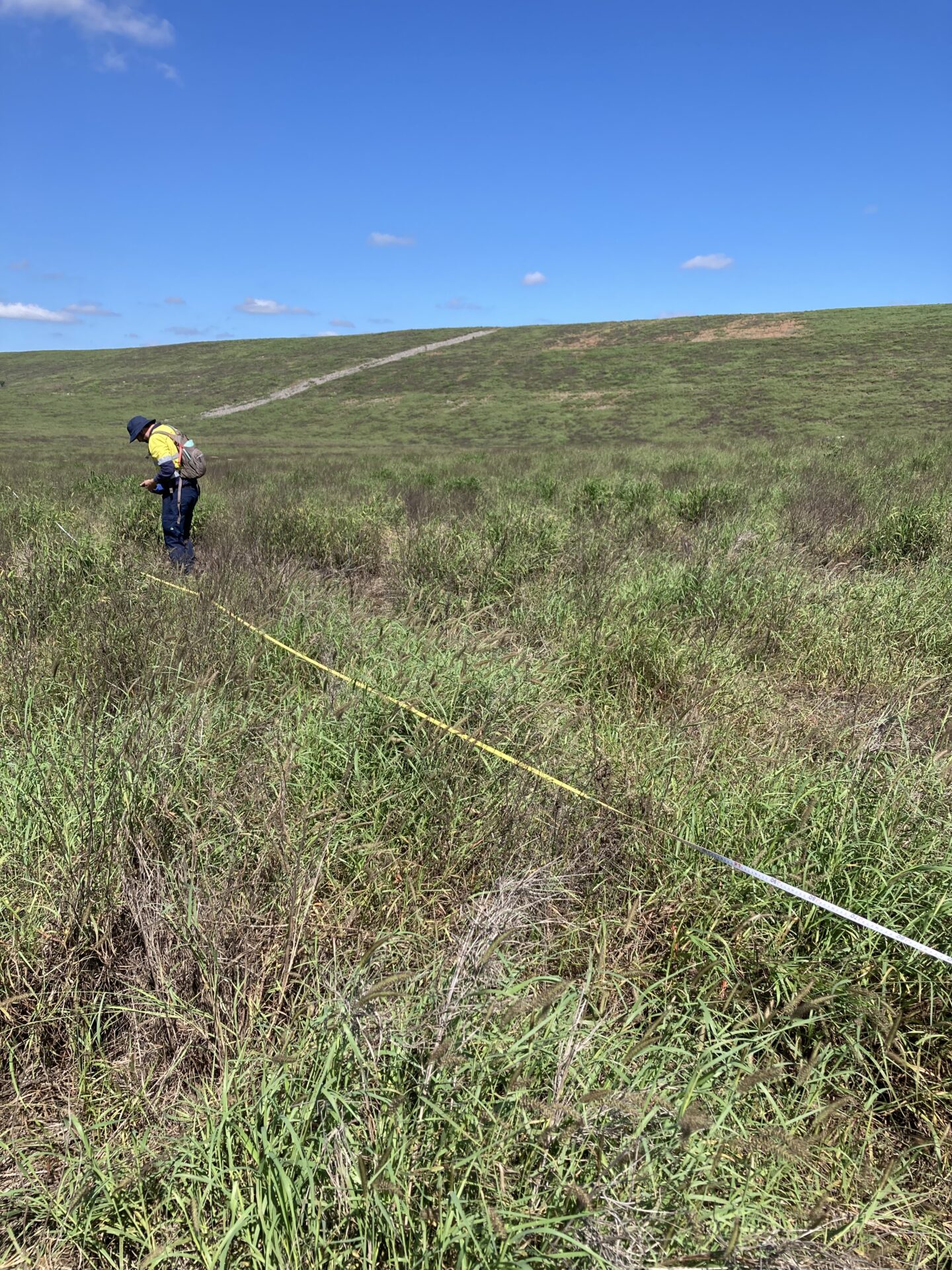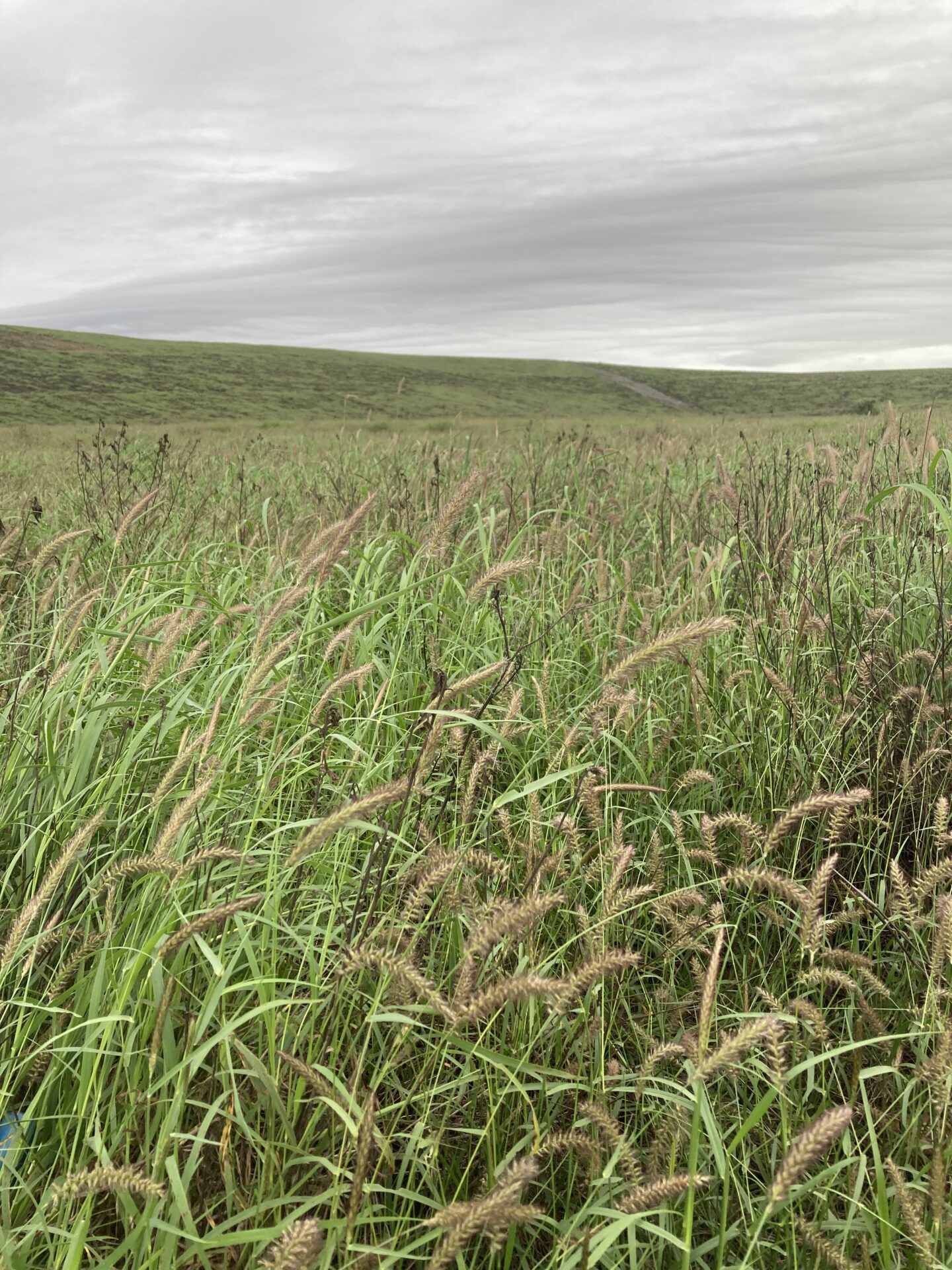Background
SGME was engaged to conduct a baseline assessment of rehabilitated land to be used for grazing. The mine is an open cut operation located approximately (~) 140 kilometres south-east of Mackay and ~22 kilometres east of Moranbah in Central Queensland’s Bowen Basin.
Objective
SGME was engaged because the understanding of potential impacts of grazing on soil quality, vegetation composition and biodiversity on previously mined and rehabilitated land was limited.
There was also a lack of information about soil characteristics such as nutrient levels, pH and salinity that is essential for successful vegetation establishment. Additionally, there was insufficient data regarding the presence and distribution of weeds, and the associated impacts on rehabilitation.
Solution
As part of our comprehensive environmental rehabilitation strategy, we conducted a baseline assessment focusing on the historical land use of cattle grazing. Our assessments covered biomass, soil quality, weeds and pests to provide crucial insights for evaluating rehabilitation areas post-grazing trials. The soil survey involved sampling and conducting field and laboratory analyses for key indicators such as pH, electrical conductivity, total soluble salts and nutrient content in line with established sufficiency ranges for plant nutrition. Additionally, we assessed biomass and weeds to understand vegetation health and potential ecological impacts.
Our assessment method included sampling vegetation across selected sites, using quadrat sampling or line transects to measure biomass and recording species composition, ground cover and basal area. Photographic monitoring documented changes over time, and data analysis yielded valuable insights into vegetation health, diversity and density that guide future rehabilitation strategies. These findings highlight the critical need for ongoing monitoring to assess the effectiveness of rehabilitation and to mitigate unforeseen environmental consequences.
At SGME, we’re dedicated to minimising the impacts of mining through habitat restoration and monitoring. We prioritise techniques such as revegetation to stabilise soil and protect biodiversity. Our approach includes advanced methods such as soil stabilisation and water management to enhance the resilience of restored habitats. Continuous monitoring is central to our success. By tracking habitat recovery progress and identifying potential challenges, we can make adjustments for an improved outcome.
Our strategy involves careful planning, tailored approaches for each mine, stakeholder engagement, adaptive management and a long-term commitment to ecological restoration. Clients can rely on us for thorough assessments, strategic planning, native species support, clear goals, effective monitoring, adaptive strategies and successful habitat restoration results.


